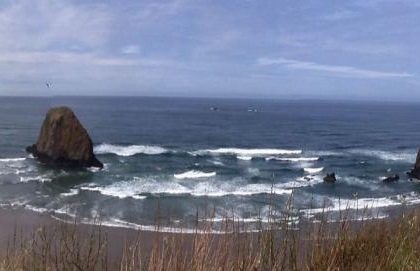The Pacific Coastal Resources Atlas (PCRA) for British Columbia, Canada, was developed in response to the expressed need for an easily accessible information source that can be used by anyone with an interest in Coastal Marine Resources Planning. Government agencies, Regional and Community Governments and NGO’s are able to access the best available coastal resources datasets; all interest groups will be “working from the same page” of information. The system allows authorized users to add new information (in a timely manner) as it becomes available using “on-line” data entry tools. To date, both freshwater and coastal resources fishery information has been housed in a huge variety of data warehouses; some of these are digital, some are available in hardcopy form only, and much of our coastal resources knowledge still remains in the form of unwritten Traditional Ecological Knowledge. Amalgamating these sources around a single access point (using access agreements and links to a variety of data servers) will streamline coastal planning processes. The benefits to Governments and Communities are significant; requests for existing information from Government agencies will be greatly reduced (with associated cost savings) – community members will have a greater sense of ownership and stewardship of natural resources and will be better informed when resource use conflict decisions are being made.
A number of government and non-government web sites distribute selected coastal resources data and maps specific to a particular species or habitat. The data presented is often in different formats and, on occasion, may not be consistent. The Community Mapping Network (CMN) initiative is presently the only system that allows password-authorized entry of new information using web-based mapping tools. Another initiative for the Canadian Pacific coast is the British Columbia Marine Conservation Analysis (2006–2013). It was a collaborative endeavour, creating tools to help inform decision-making for our coast. Please see www.BCMCA.ca for up to date information about marine birds and many other map layers. Metadata for the Pacific Coastal Resources Atlas is available in three supporting documents below.
Although there is a lot of information about British Columbia’s coastal resources in the various data warehouses, there is a much larger area of the BC coast for which no information exists! The cost of doing detailed surveys in this huge coastal area would be phenomenal, (at a recent conference at the Institute of Ocean Sciences one participant estimated it would take 60+ years using the best available technology just to accurately map the BC coastal seafloor and inshore). The ability to map additional coastal resources using local knowledge (including new agency-sourced information) will greatly assist BC residents in making responsible resource use decisions. The importance of metadata used in the PCRA approach is stressed throughout the following system description. The tools described allow for the input of new information that will come from a variety of sources with an associated variety of accuracy, (as is the case with most existing information sources).
The system allows anyone who views the maps and data reports to review the sources of the information and the relative accuracy of the observations. As time goes on, any information that has not been adequately field-truthed will be subjected to more detailed examination and up-dated appropriately. In the meantime, “suspected presence” (of any species or habitat) is better than no information at all as coastal resource use planning decisions are being considered. The Pacific Coastal Resources Atlas is designed to streamline the collection and dissemination of marine habitat and fishery resource information for coastal BC. The goal of the system is to create an easily accessible source of spatially georeferenced marine habitat and resource information. Although the individual databases and GIS layers may reside on different computers in a range of agency data warehouses, the PCRA system is designed to make all of the information accessible to information users and providers at one specific location through the internet.
There are many uses for spatially georeferenced marine habitat and fishery information. Some examples of the business needs for this information include: * Habitat referrals for foreshore leases and licences; * Oil spill contingency planning and response; * Community shoreline planning and zoning; * Provincial coastal planning; * Provincial and Federal Marine Protected Area analysis; * Fisheries research which looks for correlation of marine resources with habitat. The Pacific Coastal Resources Atlas is available through the Community Mapping Network (CMN).
The Community Mapping Network was created to share a wealth of natural resource information and maps with communities in British Columbia, Canada. Government and community natural resource information is integrated and made accessible through a user friendly, interactive mapping system called Autodesk Mapguide. A series of servers are utilized to share the workload for serving province-wide topographical base maps, high resolution orthophotography, Canadian Hydrographic Service Charts and selected resource information. Maps and natural resource information are “web-served” to assist communities and local governments with landuse planning, to promote conservation and protection of sensitive habitats and to raise awareness and respect for ecological values.

